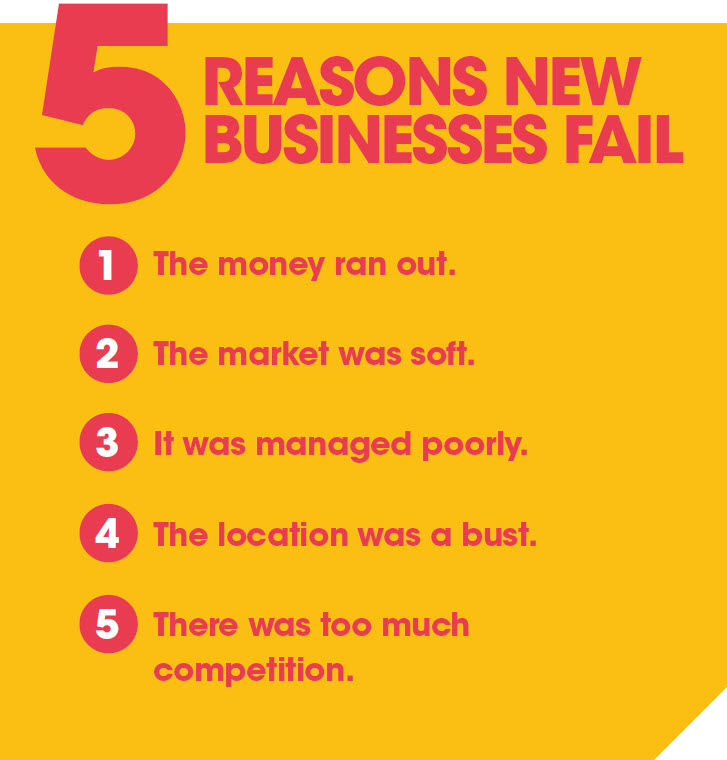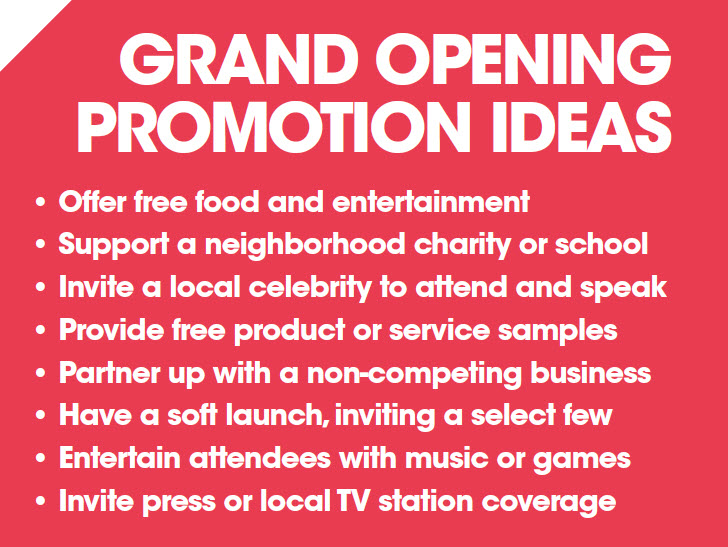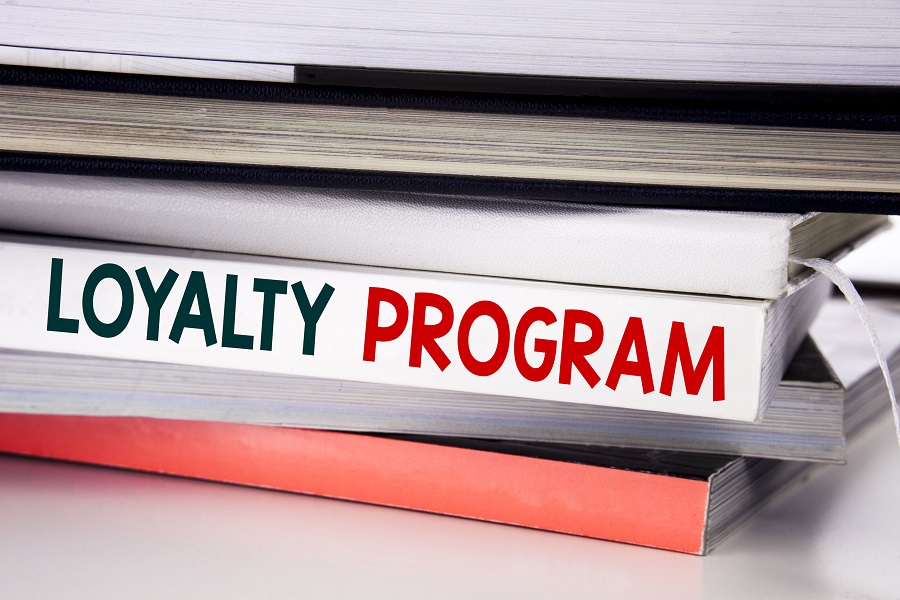Starting a new business is a passionate gamble. With the odds statistically stacked against you, you roll the dice anyway (passion does that).
According to the U.S. Bureau of Labor Statistics, around 20% of newly opened businesses fail within 2 years, and 45% go down within the first 5. In fact, only 25% or so of new businesses hit the 15-year mark. Why?
Advertise or Risk Being Overlooked
Advertising is like oxygen to your business—without it, survival is often short-lived. It is a way to create a stronger connection with the customer. If your ad strikes a note with a consumer on a personal level, that feeling may cause them to visit your business more frequently. Most importantly, it is a way to reach the right consumer to let them know you exist, that you have a product or service they need, and where they can find it. Think about a jingle getting stuck in your head, maybe a car ad or a mattress store commercial; the next time you need a similar product, odds are you’re going to stop at that “jingle store” whether you are consciously aware of it or not. That is the power of good advertising. It’s as if you’re compelled to shop somewhere.
Think of your advertising as the teacher and your consumers as the class—you must educate them so they know more about your business and what you can offer them. For instance, when we visit the dentist, all around the office are infographics about teeth / mouth health—and then you’re given the tools (toothbrush, floss, etc.) often marked with your dentist’s logo, to accomplish the goals set out by the information all around you. Like a kitchen brand might post a video on social media showing a hack to cut cucumbers properly or onions without crying. When the consumer tries the hack and it works, they’re delighted, and that company will come to mind the next time they shop for kitchenware. Plus, the success of the hack builds brand loyalty because potential customers now trust what you’re telling them more than before. Repetition in advertising, backed by reliable service and product, helps acquire and retain customers. You are only as good as your word, and plenty of competition out there would like nothing more than to steal your market share. Stay ahead of the competition with consistent messaging that showcases your business and builds loyalty, eventually turning into sales.
The Importance of Directory Listings
97% of consumers learn MORE about local businesses from the internet than any other source nowadays. Including your new business on local directory listings such as Yelp, Bing Places and Google My Business amplifies the opportunity for potential customers to find it when searching for what you sell. Accuracy and consistency in your business information (name, address, phone number, website, menu, hours, etc.) across directories further establishes trust with these customers. How you respond to reviews on listings is equally important, as it’s a reflection of customer service.
Inclusion in directory listings increases your business’s search engine exposure and local search penetration. It ensures you show up in web mapping platforms like Google Maps too. If you need help, there are service providers that work with directories to claim ownership of listings and push out changes to information en masse.

How to Advertise Your Grand Opening
Make it grand, of course! Your business will soon be open to the public, and that’s a reason to party. But if you want potential customers to be there, so it’s a crowd versus a smattering of folks, you must generate buzz early. What fun ideas will bring in the foot traffic? Put signs in the windows, and offer giveaways, 2-for-1 deals, and games (heck, why not provide pony rides!). Invite other local business owners (an excellent way to meet your competition and local community members). Have you ever walked by a pizza restaurant and seen through the window a cook spinning dough? Hungry yet?

If you’re a service company, say, a lawn care business without a brick-and-mortar location, you’ll need to be more creative. A low-cost option is to rent a booth at or sponsor a local event and bring your grand opening show on the road. Here you can meet-and-greet, boost awareness and collect contact information from potential customers.
You want your ads to get to the right audience and connect content-wise so when they see them, they’ll resonate. With a bit of help, it’s possible to narrow down whom your ads are targeting in terms of demographics, geography, wants, needs, interests, etc.—drilling down to a more granular level and casting a smaller net.

The bottom line is when you open a new business, that’s your dream, your hopes; it’s worth investing in and promoting. Whether you choose to use some of the methods mentioned above, add to them or combine them, in the end, you will find what works best for your needs.
Your grand opening needs to excite people, creating word-of-mouth about how great your business is and their experience with it. Open with a shout rather than a whisper.
Hey, What’s New?
Your business is doing great, so it’s time to expand and open a new location. Here again, your marketing strategy is critical to whether your growth continues. Getting started on the advertising early, before the opening, is as vital as staffing the new location. Of course, there is always the opportunity to pay for advertising online, but depending on budgetary restrictions, consider nontraditional methods first. Maybe you’re opening a new spa location and offering 15-minute free massages for joining the mailing list. Applying for a local award, trying guerilla marketing, starting a blog, and using them in conjunction with paid advertising can make an impact and get more eyeballs on your new location.
New Location, New Offerings
It’s important to advertise a new location to make your current and potential customers aware that your business is in a new area—people like to try something new, even if it is part of something old (especially). Your new location may have more items to offer that aren’t available at the current place. The new spot might have a liquor license and an in-house brewery. There may be more private rooms for birthdays or other special events. The new location may be more kid-friendly with a play area or more items suited for a younger crowd (like a kiddie pool vs. the adult pool at a hotel). Maybe the new location has a stage and offers live entertainment, karaoke nights, etc.

How to Retarget Without Cookies
By 2024, Google will phase out third-party tracking cookies and privacy-conscious consumers are here for it. Marketers, not so much. Now you must rely on first-party data sourcing for retargeting ad campaigns – whether you’re advertising your new location or looking for a bump in sales. By capturing email addresses during transactions, you can retarget current / former customers with email nurturing campaigns or sponsored posts on social media platforms like Facebook and Instagram. With a consumer’s physical address, you can also retarget using direct mail, serving programmatic display ads on all the devices in the households you mail for additional impressions. Whichever retargeting methods you implement, gather as much first-party data as possible now. In this case, more is more.

Channel Spotlight: Email Marketing
Email is universal and arguably one of the best ways to communicate with current customers. Based on studies, 86% of consumers are interested in receiving promotional messages from businesses they interact with at a minimum monthly—15% would like to receive emails daily. Moreover, email is a valuable tool in any marketing strategy to meet specific goals.
Email creates leads too. Leads that can turn into sales and new customers. It boosts engagement, communicates rewards and referrals, and more. For potential customers who are still on the fence about taking that next step, it can encourage them to do it. From newsletters and welcome messages to abandoned cart reminders and limited-time offers, email is a crucial part of today’s successful marketing campaigns. Plus, when email marketing is combined with direct mail, consumers spend 25% more. Check out this quick-start guide to email marketing that includes best practices in personalization and sending, building and managing your database, and tips on regulatory compliance.




